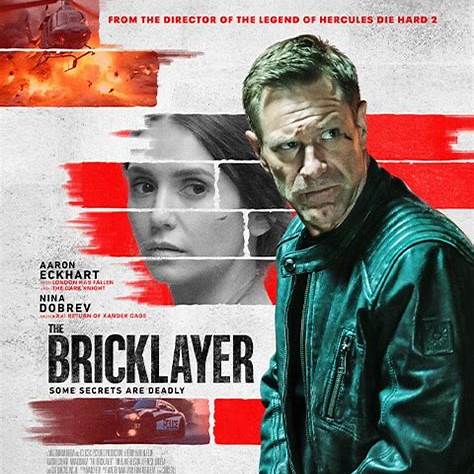The Bricklayer is a throwback to the gritty, globe-trotting spy thrillers of the ‘90s. Directed by action veteran Renny Harlin, the film follows a reluctant ex-CIA operative coaxed out of retirement to clear his agency’s name. Anchored in Greece, the visual tone is sun-scorched and cynical, echoing the classic Cold War chase films but with a modern sting.
The film’s premise is straightforward: a series of murders targeting foreign journalists, orchestrated to implicate the CIA, sends shockwaves through international politics. The agency’s only hope is Steve Vail, a once-great field agent who now spends his days quietly building brick walls. When a junior CIA analyst uncovers the conspiracy and demands action, Vail is pulled back in. This setup allows for a tension-filled exploration of betrayal, loyalty, and redemption among operatives who’ve long since moved on.
Harlin handles the action commendably. Gunfights crackle with kinetic energy, car chases have visceral weight, and hand-to-hand combats feel grounded—credit to Eckhart’s physicality and willingness to engage in his own stunts. The direction never forgets that movies like this live or die by their set-piece execution, and most of The Bricklayer pulls through. These sequences are the film’s lifeblood, providing bursts of adrenaline that keep the engine running, even when the plot occasionally stalls.
But the script, penned by Hanna Weg and Matt Johnson from Noah Boyd’s novel, clings tightly to genre conventions. The “grizzled hero returns to duty” trope is well-worn and the conspiracy is polished but not revelatory. Some dialogue drifts into cliché, especially the lone-wolf banter between Vail and his rookie partner, Kate. Yet Eckhart brings enough gravitas to Steve Vail that you feel the weight of every look, every slight hesitation before a fight. His presence elevates scenes that might otherwise slip into rote territory.
Nina Dobrev, as Kate, provides an adequate foil. The film leans into the classic dynamic—seasoned operative meets eager desk jockey—but doesn’t push it further. Their chemistry is serviceable, not electrifying, just enough to lend relational texture without slowing the narrative. Supporting turns from Clifton Collins Jr. as the rogue agent with a vendetta, Tim Blake Nelson as the exasperated CIA boss, and Ilfenesh Hadera as a returning contact add color and depth, though none emerge as fully dimensional figures.
The pacing shows occasional imbalance. The initial act unfurls methodically as Vail resists the call, and the conspiracy unspools another layer. Once the action kicks in, the tempo sharpens—until it dawdles again during plot exposition. The 110-minute runtime might have benefited from trimming some boardroom scheming or repetitive backstory. Still, the leaner pacing once the physical stakes ramp up shows the film’s core thrives on movement, not negotiation.
Visually, The Bricklayer is attractively framed. Its Mediterranean locales offer a textured contrast to the dust, sweat, and steel of espionage. The cinematography doesn’t redefine the genre, but it doesn’t need to—the light falls better through Hellenic windows, architecture frames intimacies and threats in equal measure.
By film’s end, The Bricklayer doesn’t reinvent the spy thriller wheel, but it revs it up. The final confrontation, punctuated by moral reckonings and explosive payoffs, lands with the comfort of familiarity wrapped in enough craft to feel deliberate, not lazy. Vail emerging from rubble, radio still unbroken, is a fitting metaphor for the hero himself: scarred, unbowed, still standing.
In a crowded action field, this movie’s strengths lie in execution over invention. It pays homage to action cinema’s past while showing that old-school genre mechanics still resonate when polished with skill. For fans of relentless pacing, grounded heroes, and conspiracies spun across continents, The Bricklayer delivers the goods with solid performance, tight choreography, and noises that pack a punch. It may not dwell in the cerebral stratosphere, but it earns respect for going all-in on its type of cinematic joyride.




